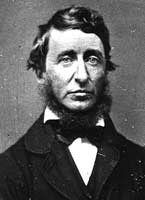Iraq's Gravedigging Industry Is at 100% Full Employment
By Dahr Jamail, IPS News.
BAGHDAD, Feb 5 (IPS) -- Amidst the soaring unemployment in Iraq, the gravediggers have been busy. So busy that officials have no record of the number of graves dug; of the real death toll, that is.
"I've been working here four years," a gravedigger who gave his name as Ali told IPS at the largest cemetery in Baghdad, a sprawling expanse in the Abu Ghraib section of the capital city. "In 2006 and some of 2007, we buried 40- 50 people daily. This went on for one-and-a-half years.
"Twenty-five percent of these were from violence, and another 70 percent were killed by the Mehdi Army (the militia of Shia cleric Muqtada Al-Sadr)." Only a few appeared to have died from natural causes.
"Most of the dead were never logged by anyone," Ali said, "because we didn't check death certificates, we just tried to get the bodies into the ground as quickly as possible."
An Iraqi Army checkpoint was set up outside the vast cemetery a year ago.
"We opened this checkpoint because people were burying the dead and no information was being given to anyone," a soldier, speaking on condition of anonymity because he was not authorised to speak to the media, told IPS.
"Most of this (lack of reporting the dead), we found, happened during 2006," the soldier added. "Anyone could be buried here, and nobody would know about it."
Not far, in the Al-Adhamiya area of Baghdad, what used to be a park is now a cemetery with more than 5,000 graves. According to the manager, most of the dead are never counted.
"Most of the bodies buried here are never reported in the media," Abu Ayad Nasir Walid, 45, manager of the cemetery told IPS. He has been the manager here since the park was converted into a cemetery amidst the bloodletting from sectarian violence in early 2006.
"I have the name here of the first martyr buried," Walid said, pointing to a tombstone. "Gaith Al-Samarai, buried on 21 May 2006, he was the sheikh of the Al-Hurria mosque."
Latif produced the cemetery logbook. "As of this hour, exactly, there are 5,500 bodies in this place. I log their names in my book, but we've never had anyone come from the government to ask how many people are here. Nobody in the media nor the Ministry of Health seems to be interested."
Such graveyards, and there are many, raise questions about the real death toll in Iraq.
The last serious study, by a group of doctors in the U.S. and Iraq, was published in the British peer-reviewed medical journal The Lancet on Oct. 11, 2006.
The study said about 655,000 Iraqis (2.5 percent of the population) had been killed as a direct result of the invasion and occupation. The research was carried out on the ground by doctors moving from house to house, questioning families, and examining death certificates.
Homes were surveyed in 47 separated clusters across Iraq. The Lancet says the study, carried out by the Johns Hopkins Bloomberg School of Public Health in Baltimore in the U.S., has been validated by four independent experts.
The worst of the violence followed the Feb. 22, 2006 bombing of the Al- Askari shrine in Samarra. The bombing of one of the most sacred Shia mosques in the world sparked sectarian violence that lasted months, with sometimes more than 300 killed in a day.
"During that time we buried 30-40 bodies daily," Sehel Abud Al-Latif, a gravedigger at the Al-Adhamiya cemetery told IPS. "Often we had to work through the night, otherwise the bodies would just remain outside."
Some estimates of the death toll have been considerably lower than that of The Lancet. The group Iraq Body Count (IBC), which describes itself as an "ongoing human security project," estimates the number to be 98,850 as of the time of this writing.
The group says on the methodology: "Deaths in the database are derived from a comprehensive survey of commercial media and NGO-based reports, along with official records that have been released into the public sphere."
IBC adds that figures are included from "incident-based accounts to figures from hospitals, morgues and other documentary data-gathering agencies."
The website adds, however, that "IBC's main sources are information gathering and publishing agencies, principally the commercial news media who provide web access to their reports." Also, the IBC only records violent deaths, and only those of civilians.
The unofficial cemeteries around Iraq hold their own additions to the numbers doing the rounds. And no one knows what these add up to.
Dahr Jamail is an independent journalist who reports from Iraq.
reposted from:
http://www.alternet.org/waroniraq/125484/iraq%27s_gravedigging_industry_is_at_100%25_full_employment/
Subscribe to:
Post Comments (Atom)

No comments:
Post a Comment